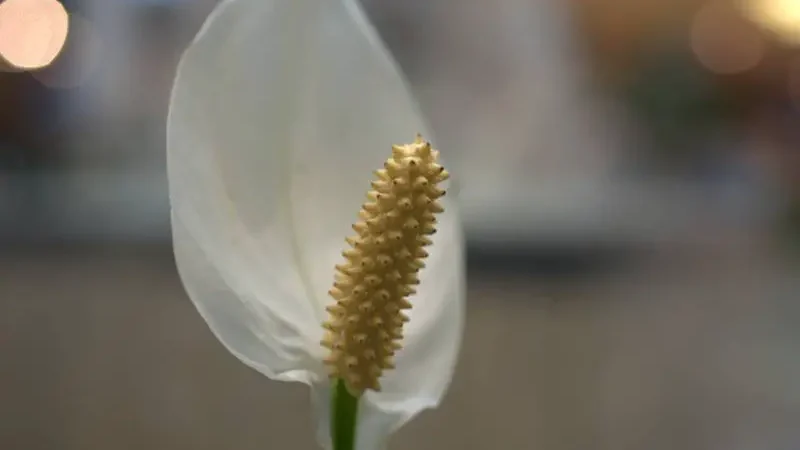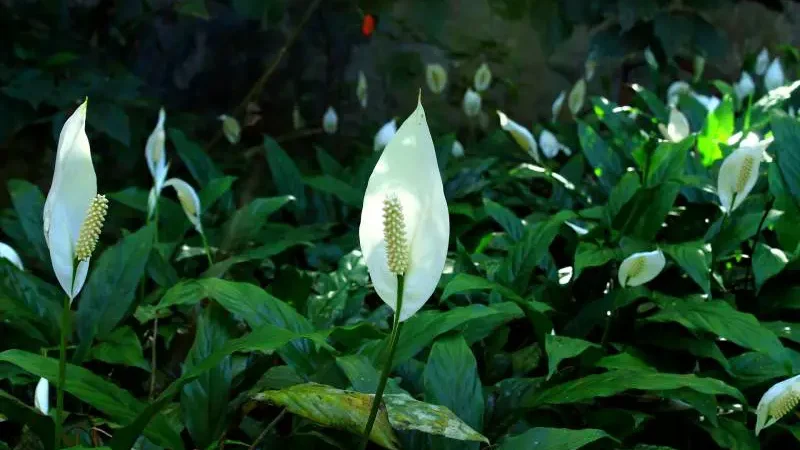Peace Lily Soil Requirements – Guide

The peace lily plants is a popular indoor plant sought after because of its ability to brighten up every home. It also has the intrinsic ability to purify the air in the house.
What’s more, it is a perfect gift to friends a family anytime. Taking care of peace lily is easy since it has a natural way of seeking attention.
When the soil is dry, it droops as a sign that something is wrong. However, if you love tranquility, you need to make the peace lily your house and outdoor companion due to its blooms and as an air purifier.
Hawaii and Puerto Rico, which fall in zone 11 and 12, are the best locations to grow peace lilies effortlessly. Of course, this does not lock you out from growing the air-purifying use plant food.
Here is a peace lily soil guide to help you start growing this fantastic plant.
Right Peace Lily Soil Mix
Peace lilies like soil that is well-drained but has high moisture retention properties. Enough moisture keeps the leaves green with a shiny look. The beauty of the blooms lies in how you expose them to nutrients and light.
This explains why the plant cannot survive on soggy soils and dark corners, and achieving the right soil mix makes growing lily effortless. To get the right peace lily soil mix, you need one part of loam soil, one part of sand, and one peat moss.
The other available option is to use potting mix peat and potting soil it with perlite and a sizeable amount of bark chips.
All these help in boosting the moisture and drainage levels. Once you get the right mix right, you need to ensure the plant receives the right amount of light. The location needs to be partially shaded.
It is essential to differentiate between yellow leaves that are due to exposure to light. If your soil mix is not right, the yellowing of leaves could be a problem with the soil.
Peace lilies are moderate feeders, and you need to monitor their growth. If the plant shows slow growth during the first month, you need to add some nutrients to the soil. Lilies love water-soluble manure, and once applied, regular watering should continue.
This helps in even manure distribution around the roots system.
How To Get Peace Lily Soil Ph Right
Like many landscaping plants, peace lilies thrive in slightly acidic soils. The ideal lily soil pH ranges between 5.0 and 6.5. (as is anything under 7.0). However, this should not bother you if the pH is higher; you can also use acid-forming manure to stabilize the soil.
Lilies will tell when the soil pH is not right. The leaves turn yellow, and this happens when the stalks are around 12 inches.
If the pH is not adjusted, it will make the bloom appear faded. The good news is that you can correct the pH imbalance when the plant is growing. However, this is possible only when you notice the leaves turning yellow early.
Prior soil testing before planting is recommended. This saves you time to start balancing the pH as the lily continues to mature.
What’s more, pH-lowering and reducing products contain materials that might affect your garden’s overall performance in the future.
As a result, coffee grounds are an excellent choice for your peace lily.
Peace Lily Soil Moisture Requirements
The peace lily plant is very sensitive to the amount of soil moisture it is exposed to. The plant requires the right amount of moisture at the right time. With the lily, the drier the soil gets, the more it droops.
Once watered, the plant response is fast, and you can see the leaves begin to straighten up. Although they require consistently moist soil, peace lilies do not enjoy sitting in water that is still. Peace lily moisture requirements are simple and do not take most of your time.
Watering once a week gives the plant enough moisture to last at least seven days.
Also, you can water the plant whenever the top inch of soil becomes dry, up until the point where the excess water begins to leak out of the bottom of the container. However, the leaves attract a lot of dust, and you will need to clean them with distilled water once in a while.
Dust can also affect the health and development of the plant leaves by choking the pores. To maintain the radiant nature and attractiveness of the peace lily, you need to keep it healthy.
This way, you will derive its full benefits, including purified air in your home for better sleep and acetone vapor absorption, among others.
Low or high moisture levels are not adequate if you want to benefit from the plant; thus, you need to balance.

Peace Lily And Soil Mold
If you have ever experienced an allergy that is mold-induced, the peace lily plant has a solution for you. Indoor plants produce mold if they are overwatered. The Peace Lily, if watered properly, will actually reduce the number of mold spores found in the air, contrary to popular belief that indoor plants will produce allergy-inducing mold.
The popularity of the peace lily is not only the blooms, air purification abilities, and home décor; it also helps in reducing soil mold by removing airborne mold spores. Keeping peace lily soil moist helps the plant not only to grow healthy but also in the purification of the air.
The air is the medium that transports mold spores, and once it is purified, mold cannot thrive on your indoor plants, including the peace lily itself. Always remember soggy soils are the best breeding grounds for mold.
It is a sign that the soil is staying too wet if you notice gray molds. It is essential that the soil that is home to a Peace Lily does not stay wet, as this will prevent mold from growing on the soil’s surface.
Make sure the plant’s container has drain holes, and if not—or if the soil feels spongy—repot the plant.
Conclusion
When planted in outdoors, peace lilies add beauty to your garden, and when potted and placed indoors, you benefit immensely from them with minimal effort.
All you need is to get the peace lily soil mix correct while ensuring it receives the right moisture and partial light. Lilies do well in most soil types as long as there is enough aeration and the right amount of manure.
Being a moderate feeder, using organic manure as an amendment produces healthy deep green leaves and high-quality blooms.
Peace lilies will always alert you when there is a problem with the soil mix and lighting by changing their color to yellow or brown leaf tips.
On the other hand, when you underwater them, they droop, and you know it is time to add some moisture to continue enjoying purified air while indoors or out in the garden.